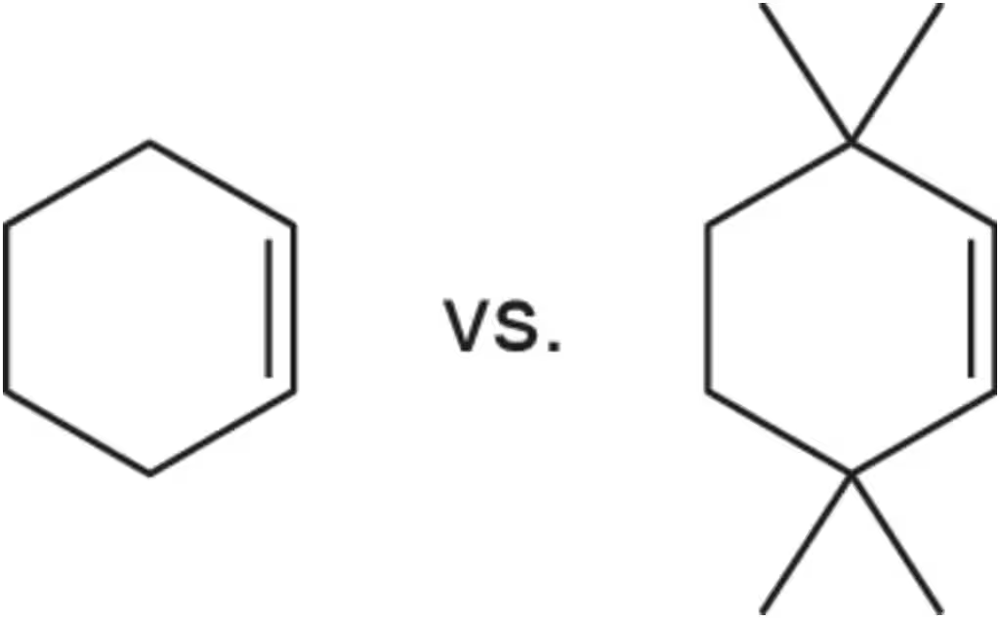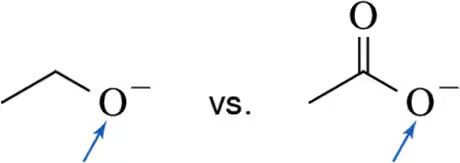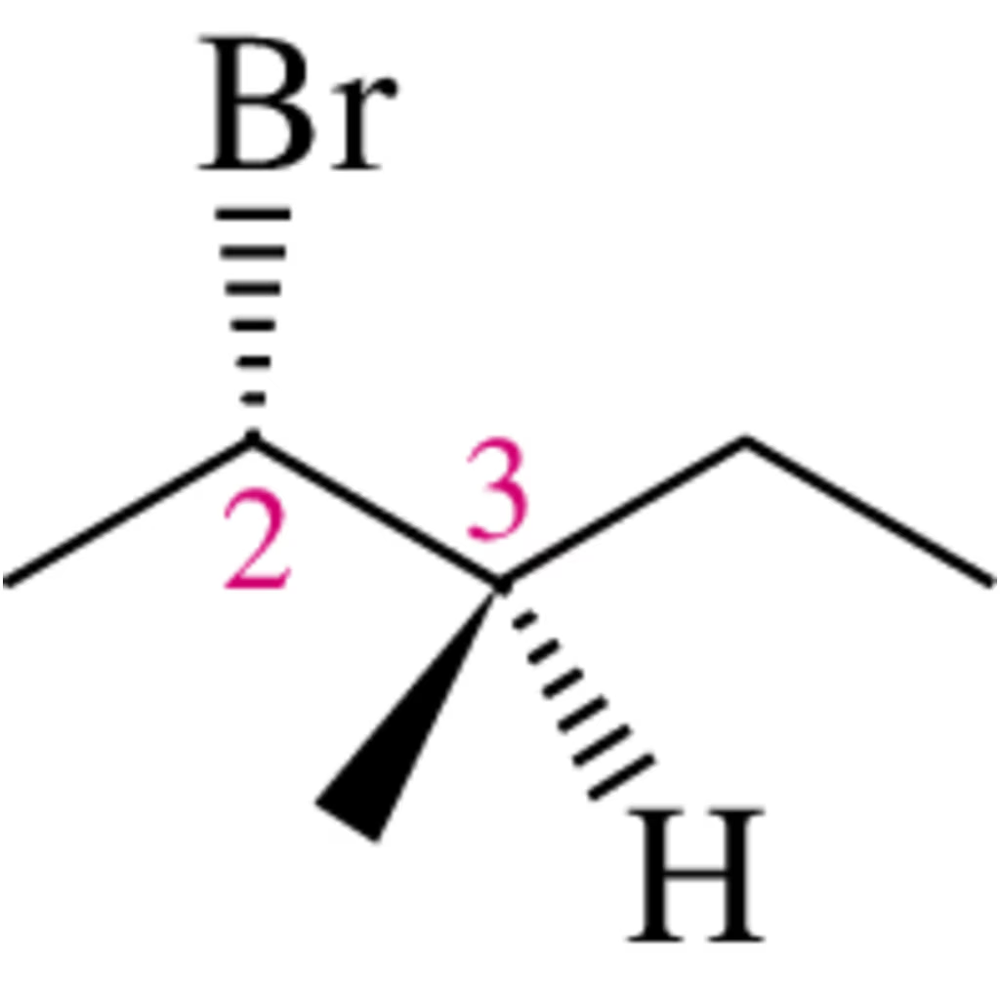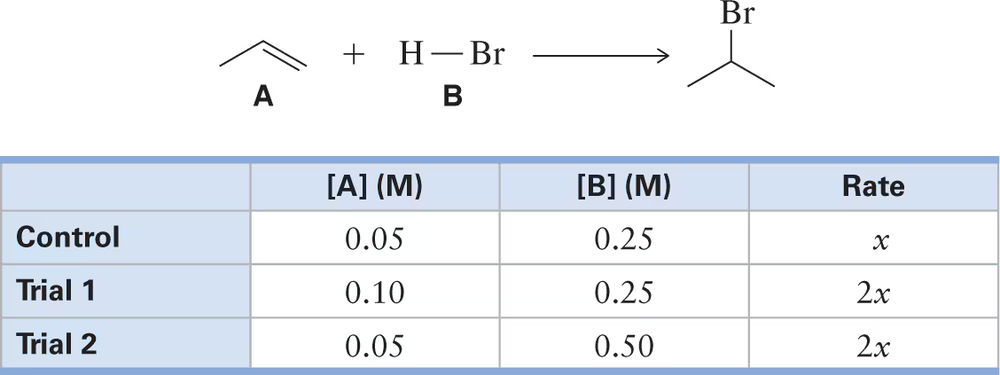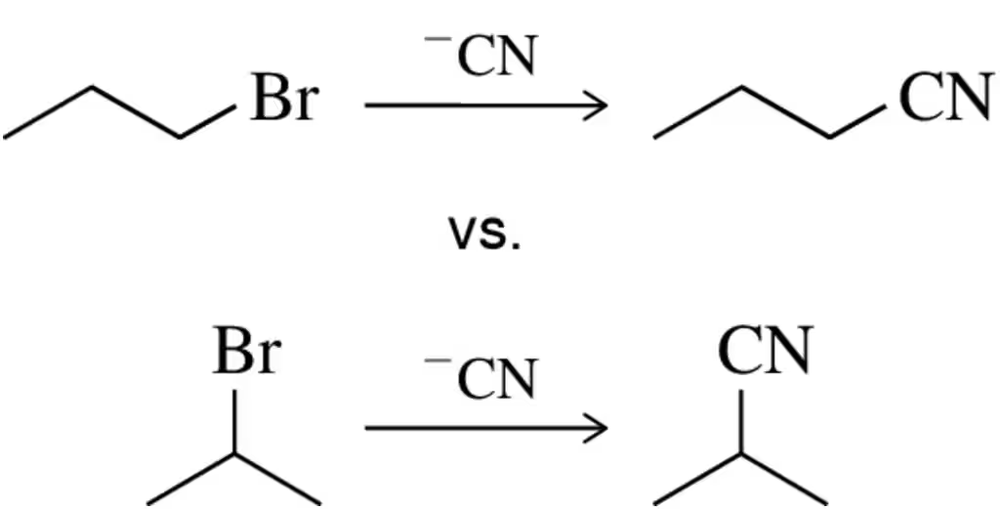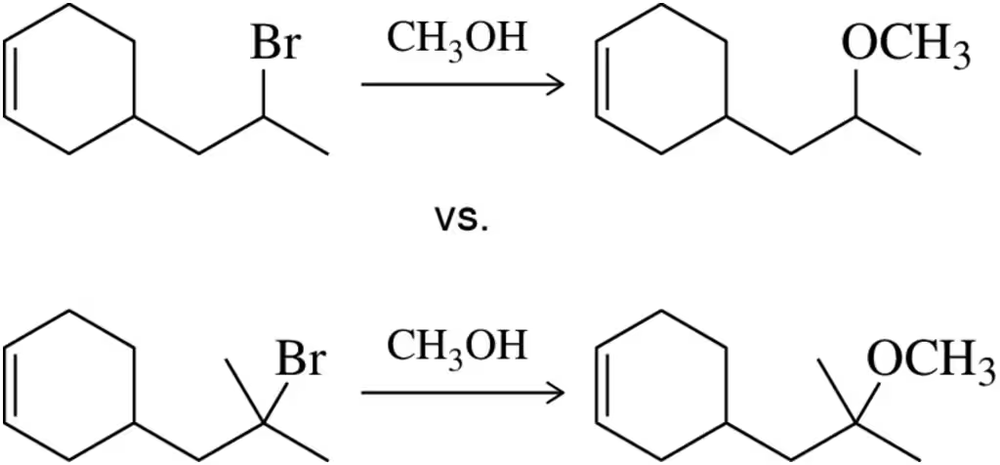 Back
BackProblem 4
Which of the following carbocations would you expect to rearrange?
Problem 2
Protonation of which of the following alkenes would be faster?
Problem 3a
Which of the following indicated atoms would you expect to be most basic?
(a)
Problem 3b
Which of the following indicated atoms would you expect to be most basic?
(b)
Problem 3c
Which of the following indicated atoms would you expect to be most basic?
(c)
Problem 4
What is the role of a solvent in a chemical reaction? What happens to the solvent at the end of a reaction?
Problem 5a
Given that step 1 of the following reaction is rate determining, write the rate law for the overall reaction.
Problem 6
For the following molecule, draw the Newman projection (around the 2,3-bond) with a dihedral angle of 180° between the bromine and hydrogen.
Problem 7a
In the following reactions, identify the bonds formed and the bonds broken.
(a)
Problem 7c
In the following reactions, identify the bonds formed and the bonds broken.
(c)
Problem 9
Based on your answer to Assessment 12.8, which bases would you expect to be good leaving groups?
Problem 10a
Given the following rate data, how many molecules are in the rate-determining step of this reaction?
Problem 11a
Practice your electron-pushing skills by drawing a mechanism for the following SN2 reactions.
(a)
Problem 11b
Practice your electron-pushing skills by drawing a mechanism for the following SN2 reactions.
(b)
Problem 11c
Practice your electron-pushing skills by drawing a mechanism for the following SN2 reactions.
(c)
Problem 12a
Practice your electron-pushing skills by drawing a mechanism for the following SN1 reactions.
(a)
Problem 12b
Practice your electron-pushing skills by drawing a mechanism for the following SN1 reactions.
(b)
Problem 12c
Practice your electron-pushing skills by drawing a mechanism for the following SN1 reactions.
(c)
Problem 12.50c
For which of the following reactions would you expect elimination to be more favored than substitution?
(c) <IMAGE>
vs.
<IMAGE>
Problem 13
Which of the following SN2 reactions should proceed at a faster rate? Justify your answer on a reaction coordinate diagram.
Problem 14
Which of the following SN1 reactions should proceed at a faster rate? Justify your answer on a reaction coordinate diagram.
Problem 15
The allylic bromide below gives two SN1 products. Justify the formation of each.


